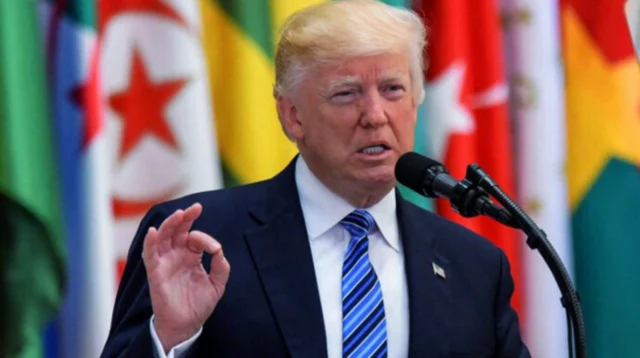The US is heading to 2025 with the challenge of balancing global security requirements and home budgets. The defense budget of the fiscal year 2025, suggested at 849.8 billion, reflects a nominal increase over the previous year but would be constrained by the fiscal responsibility act of 2023. These limitations have caused some prioritization to shift to an operational-ready position in the short term with a posture that defers some modernization activities.
Vis-a-vis the previous guidelines, the overall defense spending remains much larger than that of the world, however, its effective buying capacity has declined. The 2025 defense budget is estimated to be only 2.9 percent of GDP and in comparison to other world military budgets it is estimated to be almost 38 percent but the programs needed are being postponed. The cuts adjusted by inflation have a future impact on the systems of the next generations, such as the Next Generation Fighter of the Navy or the elements of the modernization plan of the Air Force. According to projections by the Congressional Budget Office, the next 10 years are likely to see it drop to 2.4 percent of GDP unless changes are implemented.
National security priorities amid budget constraints
The 2025 defense budget strategy continues to be based on the 2022 National Defense Strategy. This report has focused on the concept of integrated deterrence where military, diplomatic, and economic capabilities are combined to overcome the threat posed by near-peer adversaries. China and Russia are mentioned specifically and these are concerns that are reflected in the regional investments.
In this year, more than 10 billion is allocated to the Pacific Deterrence Initiative that supports the forward presence in Guam, Japan, and Australia. Equally, the European Deterrence Initiative is reinforcing US force posture in Poland, the Baltics, and Romania, making them responsive to the Russian action. Multinational exercises and rotational deployments are also used to supplement these efforts in both theaters.
Focus on emerging technology and nuclear modernization
The strategic modernization is an essential element though it has been affected by the funding pressures. The B-21 Raider bomber and Columbia-class submarines are being renovated as nuclear triad renewal, and the process has very little flexibility in schedule. The DARPA and the Space Force give priority funding to space and cyber capabilities, which are more important in sustaining deterrence in multi-domain operations.
However, it can be seen that there are constraints in the re-programmed money and the reduction of long-horizon projects. The integration of the artificial intelligence and the development of the autonomous systems continue to happen but within cost-revised schedules. The Air Force especially keeps flying old aircraft with slower fleet turnover as a result of capital delays.
The impact of domestic politics and economic conditions
The defense policy of 2025 will not be unaffected by more general fiscal discussions. As the federal debt ceiling comes back in January and the discretionary caps get restored in 2023 legislation, the Congress is being furnished with limited time to accommodate increasing military and non-defense demands. The defense discretionary spending ceiling is 895 billion, there is a need to make some trade offs between procurement, operations and R&D.
The defense spending of President Donald Trump’s administration amounts to 848.3billion in FY2026, which is a real-term decrease when inflation is taken into account. Experts in the defense sector project a shortfall of more than 25billion in purchasing power by mid-decade. Emergency legislation to provide supplemental defense funding is an immediate response to urgent needs, but will not fix structural underfunding.
Broader economic pressures and defense tradeoffs
One of the global issues of concern to economists is the increasing public debt, and current forecasts show that by 2025, advanced economies will have an average growth of 2.8 percent in debt-to-GDP ratios. US defense planners can no longer afford to ignore economic headwinds and domestic pressures on fiscal restraint in developing multiyear plans on investment.
This fact places a political limit on the growth of defense, when strategic pressures are increasing. Interest groups emphasize the need to balance defense with other issues such as infrastructure, education and entitlement programs priorities. These vested interests determine the process of budgetary debate and eventual structure of the defense authorization proceeding.
Global posture and comparative defense dynamics
The US has remained in the heart of NATO, with 66 percent of the alliance spending on defense. It is based on this level of commitment that there is an extended deterrence guarantee and that US forces are able to move freely across the world. But the burden sharing to allies is also getting more profoundly demanded, particularly in a time of domestic financial strain.
Other nations such as Germany, Poland, and Japan are also upping their own military budgets, partly because of US demands of greater self-reliance. The US continues to contribute major strategic enablers: airlift, ISR and missile defense but long term perspectives are swinging toward equal efforts in alliances.
Competitor responses and emerging threats
By the year 2025, China spent on officially its defense budget amounting to $289 billion and this is following a trend of high-tech modernization and military-civil fusion. Irrespective of the economic sanctions, Russia focuses on military expenditure using other purchasing schemes and defense-industrial cooperation. This increased competition affects the US planning, forcing it to prioritize cyber deterrence, regional infrastructure and ability to quickly mobilize.
According to the Stockholm International Peace Research Institute, 100 countries increased their military expenditures in 2024. This is indicative of increased recognition of global risk, analysts say, and a shift towards defence as a policy tool in uncertain geopolitical environments.
Defense industry, innovation, and workforce resilience
The US Defense industrial base is also a pillar of US strategic capability. Nevertheless, the underfunding will cause bottlenecks in production, fragility of the supply chain and labor difficulties. The recent lag in the supply of munitions and the airplane service cycle indicate organizational weaknesses.
It is also investing in manufacturing in the country and in safe supply chains, which are the topics of legislative acts like the CHIPS and Science Act. Nevertheless, it is a long-term process that demands a long-term investment, and the still tight financial conditions pose a question of sustainability in the future.
Research, workforce, and innovation outlook
The availability of skilled talent and the availability of regular funding are also determining factors in defense innovation. The aim of applying AI within the defense sector is to fast track the application of AI through the Defense Innovation Unit and contracts to be given in 2025 in order to enhance the use of unmanned systems and satellite resilience.
However, according to industry leaders, the lack of a stable funding over years may impact the process of talent retention and R&D schedule. The uncertainty could constrain the capability of the Department of Defense to recruit engineers and researchers in such sectors as quantum computing and hypersonics that are in high demand.
Strategic outlook and adaptive priorities
The meeting point of financial caution and strategic acuity is demonstrated in the US defense policy of 2025. The Department of Defense is working towards combined deterrence, enhanced capabilities and collaboration with allied cooperation despite economic constraints. Although the levels of short-term preparedness are maintained, modernization needs a prolonged investment to deal with the increased competition and changing threats.
Resource scarcity and the need to have strategic leadership will have to be balanced in future decisions about defense. The way policymakers use their resources, scope their missions and collaborate with allies could be the difference between the effectiveness of US military power and the nature of international security in the next decade.





